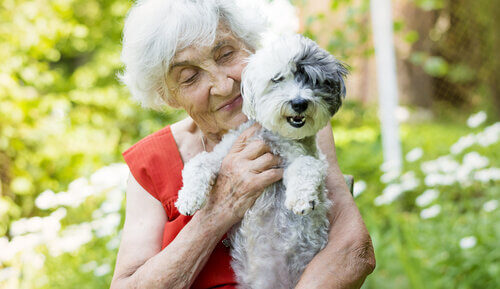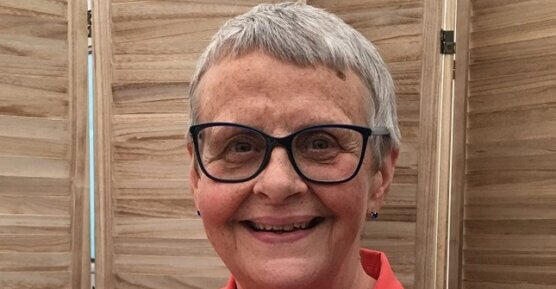
Page contents
Social interaction has been proven to be hugely beneficial for those living with any stage of dementia. Not not only does it improve a person’s wellbeing, it has also been reported to slow down some of the symptoms associated with the condition, including cognitive decline.
How does dementia affect social interaction?
Over 50% of people living with dementia experience loneliness and feel they have lost touch with loved ones since their diagnosis, according to the Alzheimer’s Society.
There are many reasons that this could be the case.
On top of the symptoms they may be experiencing, someone living with dementia could also feel embarrassed, anxious or even afraid of the condition and how it is affecting them.
This may lead to them withdrawing from the people they love and the things they usually enjoy doing. This can make it difficult for them to maintain relationships with their friends and family.
Dementia can come with many challenges, and certain types of communication may be more difficult than they once were.
How do you socialise when you have dementia?
A number of factors, such as living far away or even just the busyness of everyday life, can result in less face-to-face time with our loved ones.
This can have a negative impact on all of us. However large chunks of time without contact with friends and family can be especially detrimental for people living with dementia.
To maintain communication, it’s important to remember that there are lots of alternatives to meeting in person.
Phones and tablets have a number of features for staying in touch. This includes traditional phone calls as well as texting and emailing.
Video calls can also be really beneficial for people living with dementia.
Being able to see your facial expressions and body language can help to avoid any misunderstandings, which could be distressing for them.
Although offering many benefits, communicating via technology can have its challenges. There are additional tips for telephone and video calls on the Dementia UK website.
If your loved one isn’t tech savvy, consider writing letters or postcards to keep in touch. Not only does this provide something to read back if they want to. It can also help a person to preserve their writing skills.
Bear in mind that the type of communication a person is comfortable with, or is able to engage with, is likely to change as their symptoms progress. It may be a case of trial and error to work out which methods work best over time.
Spending time with friends
Socialising with friends is hugely beneficial for all of us, but especially so for people living with dementia. Despite this, research carried out by the Alzheimer’s Society shows 33% of people with dementia feel they have become emotionally distant from their friends.
In most cases, reaching out is the hardest step. So if they have close friends or neighbours, try to encourage your loved one to invite them round for a cup of tea and a chat.
This will help to break down those initial barriers and start the conversation. From here, it will be possible to arrange more regular meet ups, even if it’s just an hour once or twice a week.
Befriending services
If a person doesn’t have an existing friendship group, or is struggling to maintain their relationships with current friends for whatever reason, befriending services are a great way to meet new people and maintain connections within the community.
Led by a number of charities and organisations across the UK, dementia befriending services involve a volunteer spending time with a person living with dementia. They can offer companionship, emotional support or practical help such as accompanying a person to an appointment or event.
Although they don’t take on caring responsibilities, such as personal care or domestic help, volunteers usually undergo training. This helps understand dementia, how the person may be feeling and different ways to communicate effectively.
Volunteers will also be matched to the person they befriend based on things like personal interests.
Examples of befriending services include:
Clubs and groups
Getting involved with groups or classes can really help to boost a person’s confidence following a dementia diagnosis and can be great for social interaction.
They offer a space to meet people who may be in similar situations whilst also showing that living well with dementia is completely possible. There are still so many chances to continue doing the things you love as well as opportunities to try new things.
There are a range of groups to get involved in across the UK, both inclusive to those living with dementia as well as welcoming a range of people from the community.
Examples of clubs and groups could include:
- Walking groups
- Arts and crafts
- Sports or other activities, such as dancing or yoga
- Film clubs – some cinemas offer special dementia screenings

Singing groups
Singing has been proven to have many benefits for people living with dementia.
As well as being a great opportunity for social interaction, singing can also help to improve cognitive function, reduce agitation levels and improve a person’s mood.
Singing for the brain
Alzheimer’s Society runs the group ‘Singing for the Brain’. On the Alzheimer’s Society website, you can find out how to join in your local area and details of other groups in your local area.
The Songaminute Man
Teddy Mac has been an entertainer for all of his life. Working as a Butlin’s Redcoat and club singer, he was known as ‘The Songaminute Man’ based on his proclivity to remember a wide range of songs.
After Teddy was diagnosed with dementia in 2013, his son, Simon McDermott, began taking his dad out for drives in the car as a way to calm him down when his symptoms where particularly bad. Together, they would sing along to some of Teddy’s favourite songs.
Recording the drives to share with friends and family online, the videos completely took off. The pair have gone on to raise over £150,000 for Alzheimer’s Society.
Teddy Mac has now released a number of albums. Simon has written a book about Teddy’s life and their journey with dementia, including the pivotal role that singing together had not only on Teddy’s wellbeing but also the relationship between father and son.
You can find out more about their story on the Songaminute website and watch their videos on YouTube below.
Volunteering
Depending on their individual symptoms, it may not be possible for a person to continue working following a dementia diagnosis. This can have a really big impact on somebody’s self-esteem. This is especially the case if their career has been a big part of their life.
Volunteering can be a great way for a person to continue to be involved with the professional world during the early stages of dementia. It also contributes to the community and is a way socialising with other people.
Opportunities for volunteering will differ depending on where in the UK a person lives, as well as what they’re interested in.
It may be possible to volunteer at some of the groups or clubs we mentioned above. Or there may be opportunities to work in cafes or stores, or even for dementia charities.
Another option is to volunteer to be involved in clinical trials, helping researchers to find out more about dementia, its causes and potential treatments.
Taking part not only aids research, but it can also help the person to understand the condition better. It also can improve their self-esteem as they contribute to something really meaningful. There are opportunities to be involved virtually and in person.
If you are thinking about volunteering, or wondering whether it’s a good idea for a loved one, consider how your dementia symptoms affect you in day to day life. This can help you to decide what type of volunteering and social interaction would work best for you.
Visit the Alzheimer’s Society website to find out more about the process of volunteering for research and what it involves.


